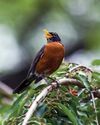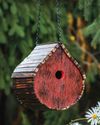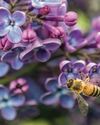Easy ways to combat drought, extreme temperatures and rock-filled soil.

WHEN YOU PICTURE THE AMERICAN SOUTHWEST, you may see dusty, windswept deserts that stretch for miles, with a lone cactus and occasional tumbleweed to break the monotony. That’s certainly one version.
Gardeners in the Southwest see another image— one that’s filled with the beautiful blooms of hardy native plants, drawing hummingbirds and butterflies. They know it takes hard work to get there, but they also know it’s worth it.
“So many people are eager to learn about sustainable gardening,” says Marisa Thompson, urban horticulture specialist at New Mexico State University (NMSU). “All over the region, people attend classes to understand a little more about water usage, drought stress, soil health, beneficial insect populations (including pollinators), species selection and wildlife habitats.”
Here are the most valuable lessons they learn.
HOT AND COLD
The Challenge: In Phoenix, Arizona, summer high temperatures average over 100 degrees. But just 150 miles to the north in Flagstaff, the average winter lows are in the teens. Desert weather is harsh, and many gardeners in the Southwest have to contend with both scorching heat and frigid cold, along with scant rainfall even in the monsoon season that runs mid-June through September.
This story is from the August/September 2019 edition of Birds & Blooms.
Start your 7-day Magzter GOLD free trial to access thousands of curated premium stories, and 8,500+ magazines and newspapers.
Already a subscriber ? Sign In
This story is from the August/September 2019 edition of Birds & Blooms.
Start your 7-day Magzter GOLD free trial to access thousands of curated premium stories, and 8,500+ magazines and newspapers.
Already a subscriber? Sign In

Clever Cowbirds
Learn more about these birds that are infamous for letting others raise their young

Ask the Experts
Pros offer spring plant care tips and tough IDs

Rustic diy Birdhouse
Whether you're hardcore handy or an everyonce-in-a-while crafty person, you probably have a small pile of scrap wood handy. Grab your tools and turn your extra materials into any house wren's dream nest box.

THE LATEST IN Lilacs
Learn about updated varieties of this timeless classic and how to take care of them

Meet the ORIOLES
GET TO KNOW eight TYPES SEEN THROUGHOUT THE U.S. AND WHAT MAKES EACH ONE STAND OUT

CBD FOR YOUR PAIN
Everyone feels the hurt as you age, but CBD can help you deal with it

Welcome, New Blooms
Update your yard with 2024's freshest florals

Western Blues
Beckon these regional bluebirds to your yard with nest boxes and mealworms

Incredible Eggs
Fun facts about these tough yet fragile wonders

Life Well Lived
Surprising facts about bird life spans